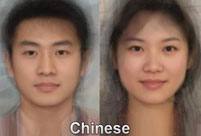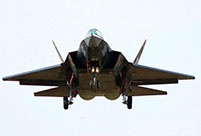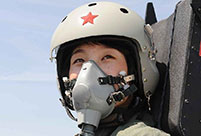 Top 100 beauties in the world!
Top 100 beauties in the world!
 Gallery: Who is the most beautiful one?
Gallery: Who is the most beautiful one?
 If you like autumn, put your hands in the air!
If you like autumn, put your hands in the air!
 Fan Bingbing's "Queen style" in new play
Fan Bingbing's "Queen style" in new play
 Lingerie show at 2014 Miss China
Lingerie show at 2014 Miss China
 J-10 fighters show aerobatic stunts in smog-free sky
J-10 fighters show aerobatic stunts in smog-free sky
 Charming contestants of Shanghai Int’l Model Contest
Charming contestants of Shanghai Int’l Model Contest
 Most amazing chi-pao beauties
Most amazing chi-pao beauties
 7 deadly animal attacks
Russia to launch 70 Proton rockets by 2020: official
7 deadly animal attacks
Russia to launch 70 Proton rockets by 2020: officialThird, consultation and communication on the basis of equality and establishing a mechanism to control and manage maritime and aviation security in the East China Sea are the pragmatic way to solve disputes such as the Diaoyu Islands issue, suspend and quiet down controversies, and improve bilateral ties.
Both countries agree that they have different proposals to ease the tension that has evolved around the Diaoyu Islands in recent years. But importantly, both sides agree to prevent the situation from worsening through dialogue, constructive crisis management and a control mechanism. These are essential measures for maintaining maritime and aviation security in the East China Sea, and they should be implemented as soon as possible.
The Japanese government's denials of a dispute over the Diaoyu Islands and the two countries' early consensus to "shelve the dispute" are the main barriers hindering a solution to the Diaoyu Islands issue. The Japanese government's "nationalization" of the Diaoyu Islands was the starting point of a tit-for-tat escalation of frictions and tensions.
Hopefully, the consensus that has been reached can lead to concrete dialogue and negotiation on the Diaoyu Islands issue and promote the formation of a security mechanism for maritime and aviation security in the East China Sea.
Fourth, it will take time to translate the consensus into action. It is unrealistic to expect a quick recovery of Sino-Japanese relations. That's why the two countries have agreed to use multilateral channels to reboot their political, diplomatic and security dialogues.
China and Japan need to create more opportunities and conditions conducive to fruitful political, diplomatic and security dialogues, as most of the two countries' divergences and disputes concentrate in these three areas. Dialogues in these areas, if well conducted, can gradually expand to other fields, such as history, culture and the economy.
The APEC meeting in Beijing is an important chance for leaders from China and Japan to rebuild their political mutual trust. Should Japanese Prime Minister Shinzo Abe meet Chinese President Xi Jinping, they will probably mention that the two countries should come back to the original point of strategic mutual beneficial bilateral ties, and construct a maritime liaison mechanism to prevent accidental sea or air incidents in the East China Sea.
Implementing the four principles with concrete actions, especially those aimed at solving key and sensitive issues, is the crux for the recovery of Sino-Japanese ties. Only when China and Japan make joint efforts in the same direction will they put bilateral ties on the right track.
The author is a researcher in Japanese studies with the Shanghai Academy of Social Sciences.
 |
 World Pole Dance Championship in China
World Pole Dance Championship in China In pics: PLA stages live-fire drill in NE China
In pics: PLA stages live-fire drill in NE China  59-year-old Liu Xiaoqing still looks stunning
59-year-old Liu Xiaoqing still looks stunning  Standard faces for each countries in the world
Standard faces for each countries in the world Shocking! Photos of Chinese fighters revealed
Shocking! Photos of Chinese fighters revealed Images of angels in white: At work v.s off work
Images of angels in white: At work v.s off work  Post-85s female pilots and their mission
Post-85s female pilots and their mission Netizens fall in love with champion swimmer Ning Zetao
Netizens fall in love with champion swimmer Ning Zetao Vibrant 21-year-old and her own Cheongsam brand
Vibrant 21-year-old and her own Cheongsam brand Top 10 most dangerous jobs in the world
Top 10 most dangerous jobs in the world  Top 10 fifth generation jet fighters in the world
Top 10 fifth generation jet fighters in the world Top 10 Chinese goddesses
Top 10 Chinese goddesses  Top 20 hottest women in the world in 2014
Top 20 hottest women in the world in 2014 Top 10 pure beauties in showbiz
Top 10 pure beauties in showbiz  Top 10 world's highest-paid models 2014
Top 10 world's highest-paid models 2014 The most gorgeous Chinese women
The most gorgeous Chinese women Top 10 most handsome faces in Asia
Top 10 most handsome faces in AsiaDay|Week|Month